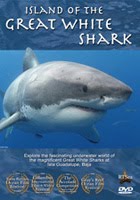Ocean Conservation Exhibition in Taiwan
 In Taiwan, this week saw the opening of a marine ecology exhibition in Taipei City's National Taiwan Museum. Designed to highlight the nation's unique ocean diversity (over 400 varieties of coral and 3,000 species of fish), the exhibition will feature live specimens including a red coral valued at over $344,000USD and a Japanese spider crab - the world's largest crab species - in addition to multimedia presentations that highlight coral spawning, mangroves, and shallow-water hydrothermal vents.
In Taiwan, this week saw the opening of a marine ecology exhibition in Taipei City's National Taiwan Museum. Designed to highlight the nation's unique ocean diversity (over 400 varieties of coral and 3,000 species of fish), the exhibition will feature live specimens including a red coral valued at over $344,000USD and a Japanese spider crab - the world's largest crab species - in addition to multimedia presentations that highlight coral spawning, mangroves, and shallow-water hydrothermal vents.What makes this exhibition, which runs until early August, so special is that Taiwan is an important gateway to Asian markets for a variety of commercial seafood - much of which is being overfished. Asian cultures can often be resistant to outside influences or opinions that can be perceived as criticizing their way of life. An event such as this is an incremental step in changing public perceptions internally about endangered species, such as sharks and tuna, and developing a greater appreciation for marine natural resources - before they are all gone.
“As an island, Taiwan is inextricably tied up with the ocean,” said Huang Shu-fang, curator of the event and chief of the museum's research section. “It is important we learn about the abundant marine species and their habitats.” Echoing that sentiment was Jeng Ming-shiou of the Academia Sinica's Biodiversity Research Center. “We hope the event will help raise public awareness of the importance of protecting the ocean.”
Australian Gillnet Regulations
 Commercial gillnets are notorious for claiming the lives of countless sea creatures that are discarded as accidental bycatch. In many cases, the majority of what gillnets ensnares is thrown away. Gillnets can catch sharks, turtles, even dolphins - anything that can get caught up in nets that can stretch for miles.
Commercial gillnets are notorious for claiming the lives of countless sea creatures that are discarded as accidental bycatch. In many cases, the majority of what gillnets ensnares is thrown away. Gillnets can catch sharks, turtles, even dolphins - anything that can get caught up in nets that can stretch for miles.In southern Australia, the Australian Fisheries Management Authority (AFMA) has put additional gillnet management regulations into effect to better protect sea lions and other non-target species. The new regulations cover the Gillnet, Hook and Trap (GHAT) Sector of the Southern and Eastern Scalefish and Shark Fishery.
“These changes are designed to offer better protection to non-target species in the fishery, particularly Australian sea lions, and to improve data collection on interactions with threatened, endangered and protected species,” said Dr. James Findlay, Chief Executive Officer of AFMA.
Predictably, representatives for the commercial shark fishing industry complained that the new gillnet regulations will increase their costs. However, gillnet fishermen have to take much of the blame for the need for stricter management policies as the commercial gillnet fishers have been shown to be under-reporting the level of interactions with threatened, endangered, and protected species.
 “It is clear that some vessels have not been accurately reporting interactions with protected species as required as a condition of their access to the fishery. Accurate information on the level of fishery interactions with non-target species is essential to ensure that our fisheries are managed in an ecologically sustainable manner,” said Dr, Findlay.
“It is clear that some vessels have not been accurately reporting interactions with protected species as required as a condition of their access to the fishery. Accurate information on the level of fishery interactions with non-target species is essential to ensure that our fisheries are managed in an ecologically sustainable manner,” said Dr, Findlay.In addition to a restriction in the use of gillnets in and around over 30 sea lion colonies, thereby doubling the total area under protection from 6,300 sq. kilometers to 18,500 sq kilometers, the use of either on-board scientific observers or remote cameras to monitor the catch was increased. Those vessels that participate in the remaining open gillnet fishing areas in South Australia will be continuously observed, either in person or electronically.
Ocean conservation, one step at a time. And, hopefully, not a second too late.

















No comments:
Post a Comment